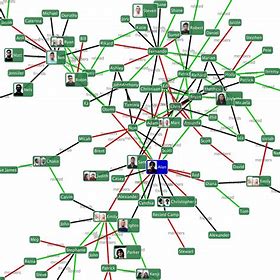Abstract:
Criminal networks represent a formidable challenge to law enforcement agencies and societies worldwide, engaging in a wide range of illicit activities such as drug trafficking, human trafficking, arms smuggling, cybercrime, and terrorism. This essay provides a comprehensive analysis of criminal networks, exploring their structure, operations, and impacts on global security, economic stability, and social cohesion. Drawing on insights from criminology, sociology, and law enforcement, the essay examines the organizational dynamics of criminal networks, the strategies they employ to evade detection and prosecution, and the consequences of their activities for individuals, communities, and nations. Furthermore, the essay discusses efforts to combat criminal networks through international cooperation, intelligence-sharing, and targeted law enforcement initiatives. By shedding light on the complexities of criminal networks, this essay aims to deepen understanding and inform strategies for disrupting their operations and protecting societies from their harmful effects.

Introduction:
Criminal networks represent a pervasive and persistent threat to global security, undermining the rule of law, economic stability, and social cohesion. These networks operate across national borders, exploiting legal loopholes, corruption, and weak governance structures to engage in illicit activities such as drug trafficking, human trafficking, arms smuggling, cybercrime, and terrorism. This essay provides an in-depth analysis of criminal networks, examining their structure, operations, impacts, and the challenges they pose for law enforcement agencies and policymakers. By exploring the complexities of criminal networks, this essay aims to deepen understanding and inform strategies for countering their activities and protecting societies from their harmful effects.
The Structure of Criminal Networks:
Criminal networks are typically organized in hierarchical or decentralized structures, with various levels of leadership, coordination, and specialization. At the top of the hierarchy are leaders or bosses who oversee the overall operations of the network, making strategic decisions, managing resources, and resolving disputes among members. Below the leaders are middle managers or lieutenants who supervise specific areas or operations, such as drug distribution, money laundering, or contract killings. Beneath them are foot soldiers or operatives who carry out the day-to-day activities of the network, such as drug dealing, smuggling, or extortion. Criminal networks may also have support personnel, such as accountants, lawyers, and corrupt officials, who facilitate their operations and protect them from law enforcement scrutiny.
Operations of Criminal Networks:
Criminal networks engage in a wide range of illicit activities to generate profits, expand their influence, and maintain control over territory or markets. Some of the key operations of criminal networks include:

- Drug Trafficking: Criminal networks are heavily involved in the production, distribution, and sale of illicit drugs such as cocaine, heroin, methamphetamine, and synthetic opioids. They control various stages of the drug trade, from cultivation and manufacturing to transportation and distribution, using sophisticated smuggling routes, concealment methods, and distribution networks to evade law enforcement detection.
- Human Trafficking: Criminal networks engage in human trafficking for various purposes, including sexual exploitation, forced labor, and organ trafficking. They prey on vulnerable individuals, such as migrants, refugees, and marginalized populations, luring them with false promises of employment, education, or better opportunities, only to exploit them for profit.
- Arms Smuggling: Criminal networks traffic in illegal firearms and weapons, supplying them to organized crime groups, terrorist organizations, and conflict zones around the world. They exploit porous borders, corrupt officials, and lax regulations to smuggle weapons across international borders, fueling violence, conflict, and instability in affected regions.
- Cybercrime: Criminal networks engage in a wide range of cybercriminal activities, including hacking, phishing, ransomware attacks, and online fraud. They target individuals, businesses, and government agencies, seeking to steal sensitive information, disrupt critical infrastructure, and extort money through digital means.
- Terrorism: Criminal networks provide logistical support, funding, and recruitment services to terrorist organizations, enabling them to carry out attacks and propagate extremist ideologies. They exploit social media, encrypted communication channels, and online forums to radicalize individuals, coordinate attacks, and disseminate propaganda.
Impacts of Criminal Networks:

Criminal networks have far-reaching impacts on global security, economic stability, and social cohesion, affecting individuals, communities, and nations in profound ways. Some of the key impacts of criminal networks include:
A. Economic Impacts: Criminal networks undermine legitimate businesses, distort markets, and siphon off billions of dollars from the global economy through illicit activities such as drug trafficking, human trafficking, and money laundering. They undermine the rule of law, weaken regulatory frameworks, and erode public trust in financial institutions, hindering economic development and prosperity.
B. Social Impacts: Criminal networks perpetuate violence, corruption, and social instability, undermining the safety and well-being of individuals and communities. They prey on vulnerable populations, exploit marginalized groups, and exacerbate inequalities, exacerbating social tensions and undermining social cohesion. Moreover, criminal networks perpetuate cycles of poverty, addiction, and victimization, trapping individuals in a vicious cycle of exploitation and despair.
C. Political Impacts: Criminal networks undermine democratic institutions, corrupt public officials, and subvert the rule of law, posing challenges to governance, accountability, and the rule of law. They infiltrate political parties, influence electoral processes, and undermine the legitimacy of democratic institutions, eroding public trust in government and fostering cynicism and disillusionment among citizens.
V. Strategies Employed by Criminal Networks:
Criminal networks employ various strategies to evade detection, expand their operations, and maintain control over territory or markets. Some of the key strategies employed by criminal networks include:

- Corruption: Criminal networks exploit corruption, bribery, and collusion to infiltrate law enforcement agencies, government institutions, and regulatory bodies, undermining their effectiveness and integrity. They co-opt public officials, intimidate witnesses, and obstruct justice to avoid detection and prosecution.
- Violence and Intimidation: Criminal networks use violence, intimidation, and coercion to eliminate rivals, silence witnesses, and enforce their control over territory or markets. They engage in acts of intimidation, extortion, and retaliation to maintain their dominance and deter dissent.
- Money Laundering: Criminal networks launder illicit proceeds through legitimate businesses, financial institutions, and offshore accounts, disguising the origins and ownership of illicit funds. They use complex financial transactions, shell companies, and offshore havens to conceal the proceeds of their criminal activities and legitimize their ill-gotten gains.
- Cyber Warfare: Criminal networks engage in cyber warfare and information warfare to disrupt critical infrastructure, steal sensitive information, and undermine national security. They conduct cyber attacks, data breaches, and disinformation campaigns to undermine public trust, sow discord, and destabilize democratic institutions.
VI. Challenges in Combating Criminal Networks:
Law enforcement agencies face numerous challenges in combating criminal networks, including resource constraints, jurisdictional complexities, and the transnational nature of organized crime. Criminal networks operate across national borders, exploiting legal loopholes, corrupt officials, and weak governance structures to evade detection and prosecution. Moreover, law enforcement agencies often lack the resources, expertise, and coordination mechanisms to effectively combat criminal networks, leading to fragmented and ineffective responses to organized crime threats.
International Cooperation and Law Enforcement Responses:
Addressing the challenges posed by criminal networks requires enhanced international cooperation, intelligence-sharing, and law enforcement coordination at the global, regional, and national levels. International organizations such as INTERPOL, Europol, and the United Nations Office on Drugs and Crime (UNODC) play a crucial role in facilitating information exchange, capacity-building, and joint operations to combat organized crime. Moreover, bilateral and multilateral agreements, such as mutual legal assistance treaties (MLATs) and extradition treaties, enable law enforcement agencies to cooperate across borders and pursue criminal networks through coordinated investigative efforts and joint prosecutions.
Case Studies: Notorious Criminal Networks:
Several notorious criminal networks have gained international notoriety for their sophisticated operations, ruthless tactics, and global reach. Some of the most prominent criminal networks include:
- The Sinaloa Cartel: The Sinaloa Cartel is one of the most powerful and influential drug trafficking organizations in Mexico, responsible for smuggling large quantities of cocaine, heroin, and methamphetamine into the United States and other countries. Led by Joaquín “El Chapo” Guzmán, the cartel has been involved in a wide range of criminal activities, including drug trafficking, money laundering, and violence.
- The Russian Mafia: The Russian Mafia, also known as the “Bratva,” is a transnational criminal network that operates in Russia, Europe, and North America, engaging in a wide range of illicit activities such as drug trafficking, arms smuggling, and extortion. The Russian Mafia has close ties to government officials, business elites, and law enforcement agencies, allowing it to operate with impunity and evade prosecution.
- The Italian Mafia: The Italian Mafia, including the Cosa Nostra, the Camorra, and the ‘Ndrangheta, is one of the oldest and most notorious criminal organizations in the world, with roots dating back to the 19th century. The Italian Mafia is involved in a wide range of criminal activities, including extortion, racketeering, and money laundering, exerting significant influence over politics, business, and society in Italy and beyond.
Future Directions in Countering Criminal Networks:
Addressing the challenges posed by criminal networks requires a multi-faceted and holistic approach that combines law enforcement efforts with preventive measures, social interventions, and international cooperation. Future directions in countering criminal networks include:
- Strengthening Law Enforcement Capacities: Enhancing the capabilities of law enforcement agencies to investigate, disrupt, and dismantle criminal networks through improved training, technology, and coordination mechanisms.
- Targeting Financial Networks: Disrupting the financial networks of criminal organizations through targeted sanctions, asset forfeiture, and anti-money laundering measures to choke off their funding and disrupt their operations.
- Addressing Root Causes: Addressing the social, economic, and political factors that contribute to the emergence and persistence of criminal networks, including poverty, inequality, corruption, and weak governance.
- Promoting International Cooperation: Strengthening international cooperation, intelligence-sharing, and law enforcement partnerships to combat transnational organized crime and disrupt criminal networks at the global level.
Conclusion:
Criminal networks represent a significant threat to global security, economic stability, and social cohesion, engaging in a wide range of illicit activities that undermine the rule of law, distort markets, and perpetuate violence and corruption. Addressing the challenges posed by criminal networks requires enhanced international cooperation, intelligence-sharing, and law enforcement coordination, as well as efforts to address the root causes of organized crime and strengthen the resilience of societies against its harmful effects. By deepening understanding of the structure, operations, and impacts of criminal networks, this essay aims to inform strategies for countering organized crime and protecting societies from its harmful effects.



